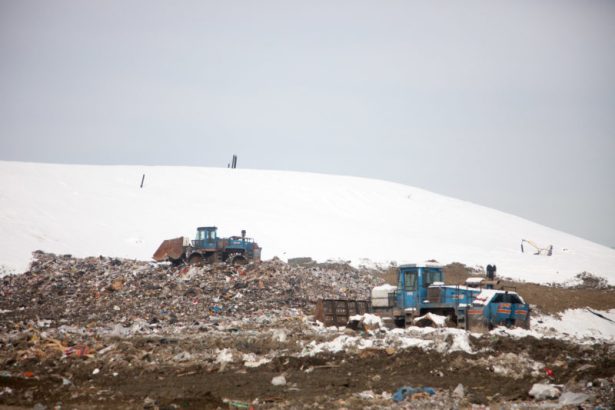PFAS Complicates the Problem of Handling ‘Garbage Juice’ From State’s Only Landfill
By Emma Cotton | VTDigger | October 28, 2021

Read the full article by Emma Cotton (VTDigger)
“Vermont’s only trash landfill has a big problem: How to get rid of leachate — the liquid waste from landfills that’s sometimes called ‘garbage juice.’
The leachate must be handled carefully because it contains toxic residue from trash that was buried at a large landfill in Coventry called the New England Waste Services of Vermont, operated by Casella.
Leachate is most often disposed of at municipal sewage-treatment plants — but those plants have no way of treating PFAS and other ‘forever chemicals’ that are in products that wind up in the landfill.
The state Agency of Natural Resources is proposing changes in the way the state handles leachate, and a key part of the plan is to send most of the state’s leachate to Montpelier’s wastewater treatment plant, which discharges effluent into the Winooski River, which flows into Lake Champlain.
Provisions in the permit have prompted concern among some residents and environmental advocacy groups in both Montpelier and Newport, which is near the landfill.
Leachate forms when rain, snow and decomposing substances seep through garbage. It’s collected in lined cells at the bottom of the Coventry landfill before it flows into a sequence of storage tanks, where it’s finally pumped into trucks and hauled to sewage treatment plants.
The current permit authorizes Casella to send 23,000 gallons of leachate per day to the Montpelier treatment plant, but the waste company can exceed that amount as long as the biochemical oxygen demand — a metric used to measure the concentration of the liquid — remains below 1,200 pounds per day.
A draft of a new permit, open for public comment until Nov. 8, would authorize Casella to send leachate to the Montpelier plant, and would maintain the current maximum concentration at 1,200 pounds per day of biochemical oxygen demand. However, it would authorize an increase in volume from 23,000 gallons to 60,000 gallons per day.
Over the last five years, Montpelier’s plant accepted an average of 19,000 gallons per day, with 65,388 gallons the biggest one-day delivery, according to a state-issued fact sheet on the draft permit.”…
This content provided by the PFAS Project.
Location:
Topics: